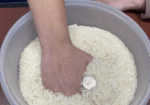THE SENSITIVITY AND SPECIFICITY OF ULTRASOUND FOR THE DIAGNOSIS OF CARPAL TUNNEL SYNDROME: A META-ANALYSIS
Filed under Diagnoses
Fowler, J. R., Gaughan J. P., & Ilyas, A.M. (2011). The sensitivity and specificity of ultrasound for the diagnosis of carpal tunnel syndrome: A meta-analysis. Clinical Orthopedics and Related Research, 469(4), 1089-1094.
The Skinny –The authors sought out to determine the sensitivity and specificity of ultrasound therapy for the diagnosis of carpal tunnel syndrome using three scenarios. 1.) using all studies regardless of reference standard 2.) using all studies with electrodiagnostic as the reference standards and 3.) using all studies with clinical diagnosis as the gold standard.
In the Weeds – The authors found a total of 19 articles that were included in the review. Remember, sensitivity indicates a true positive rate and specificity indicates a true-negative rate.
They found the sensitivity and specificity of ultrasound was 77.6% (71.6%-83.6%) and 86.8% (78.9%-94.8%), respectively.
They found the sensitivity and specificity of electrodiagnostic testing to be 80.2% (71.3-89.0) and 78.7% (66.4-91.1, respectively).
Bringing it Home– Ultrasound showed a higher specificity but electrodiagnostic had a slightly higher sensitivity. Although ultrasound may not replace electrodiagnostic testing as the most sensitive tool for diagnosing carpal tunnel, it may be a feasible alternative to electrodiagnostic testing as a first line confirmatory test.
Overall a very nicely done study however it was not without its limitation. There was a lack of heterogeneity among the studies reviewed. Both, ultrasound and electrodiagnostic testing it very operator dependent. The upside of ultrasound is it can be performed very quickly, it is often less expensive, and off course it is essentially pain-free.
–
More To Read
Therapeutic Exercise vs Therapeutic Activity
What is the difference between therapeutic exercise vs therapeutic activity? Therapeutic exercise is billed as 97110 and Therapeutic activity is billed as 97530. Both are CPT codes that are commonly used in occupational and physical therapy billing. These codes are very similar and are often confused. So, when and what do you document for each…
Read MoreEarly Mobilization After Volar Locking Plate Osteosynthesis of Distal Radius Fractures in Older Patients: A Randomized Controlled Trial
By: Rachel Reed Sørensen, T. J., Ohrt-Nissen, S., Ardensø, K. V., Laier, G. H., & Mallet, S. K. (2020). Early Mobilization After Volar Locking Plate Osteosynthesis of Distal Radial Fractures in Older Patients-A Randomized Controlled Trial. The Journal of hand surgery, S0363-5023(20)30276-8. Advance online publication. https://doi.org/10.1016/j.jhsa.2020.05.009 The Skinny: The purpose of this randomized controlled trial was…
Read MoreHand therapy intervention activities for Chemo-Induced Peripheral Neuropathy (CIPN)
Blog Post Written By: Rita Steffes Patients with CIPN may present with symptoms that include numbness, tingling, hypersensitivity to cold, loss of tactile or vibration sensitivity, decreased balance, and shooting burning pain in their hands These symptoms make it difficult for oncology patients to participate in all activities of daily living with dressing, meal preparation,…
Read MoreUltrasound use for reducing pain: Does it work?
Ilter, L., Dilek, B., Batmaz, I., Ulu, M.A., Sariyildiz, M.A., Nas, K., & Cevik, R. (2015). Efficacy of pulsed and continuous therapeutic ultrasound in myofascial pain syndrome: A randomized controlled study. American Journal of Physical Medicine & Rehabilitation, 94(7), 547-554. https://doi.org/10.1097/PHM.0000000000000210 Review by: Megan Prather The Skinny- Ultrasound hand therapy – ultrasound has been determined…
Read MoreSign-up to Get Updates Straight to Your Inbox!
Sign up with us and we will send you regular blog posts on everything hand therapy, notices every time we upload new videos and tutorials, along with handout, protocols, and other useful information.





